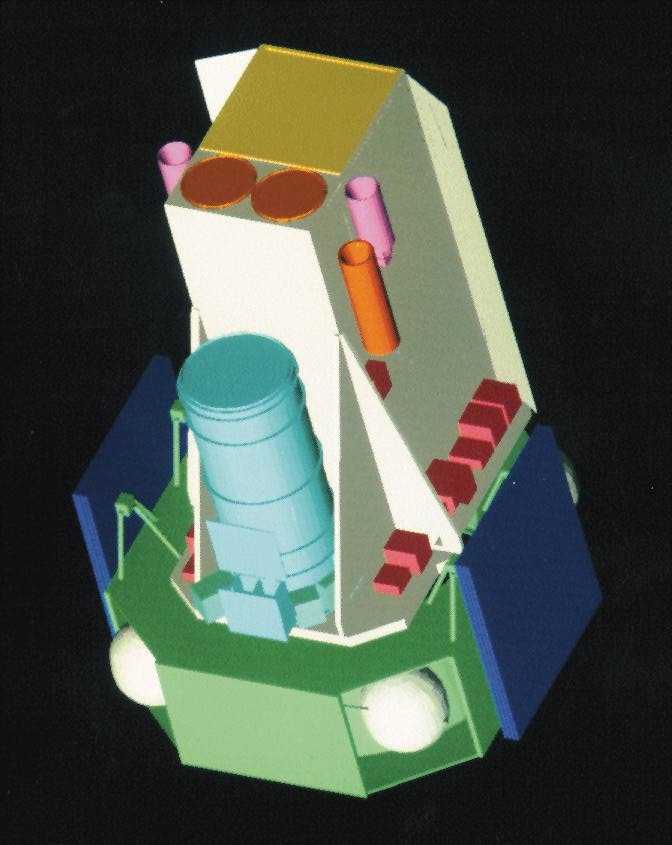| Beyond Compton
It is a paradox that successful missions can create new questions as
efficiently as they provide answers for the old questions. Such is the
nature of the scientific enterprise - you often don't realize how little
you know! Science is in a constant search for better techniques to analyze
and interpret old data. New experiments which take advantage of advanced
technology or better understanding of the space environment are always
in development. Proposed instruments such as GLAST (which stands for Gamma-ray
Large Area Space Telescope) would provide an order of magnitude improvement
in sensitivity over the already successful EGRET instrument. GLAST is an
example of the possible improvements in detector technology which can provide
a much more detailed view of the gamma-ray sky. The GLAST will utilize
advanced silicon-strip particle detectors or perhaps fiber optic technology
and would operate in the 10 MeV to 300 GeV energy range. The goals of an
instrument like GLAST are to collect more photons using larger area |
and thereby provide higher spatial resolution (to better estimate source
locations), and to have better energy resolution (to better estimate the
source spectrum), enabling even more detailed study of the high-energy
emission of active galactic nuclei, neutron stars, and diffuse radiations
which comprise much of the gamma-ray sky. Other missions such as the European-based
INTEGRAL (for INTErnational Gamma-Ray Astrophysics Laboratory) mission,
which is scheduled to launch in the year 2001, will provide images of the
universe in the important energy range from 20 keV to about 10 MeV. INTEGRAL
will provide

A conception of the INTEGRAL spacecraft. Future missions would
build on the Compton legacy.
|
very sensitive energy resolution over this range of nuclear transitions,
where many interesting gamma-ray lines may be seen in cosmic sources. No
matter the nature of the instruments to follow, the Compton Gamma Ray Observatory
has given scientists an incredible view of the universe. The breadth of
scientific results that continue to come from the Compton instruments
are revealing the wonder and power of the most energetic processes occurring
in nature. The journey of exploration which began with the first ancient
astronomers has now come to the point where we are using the tools of elementary
particle physics to probe astrophysical sites so exotic that they would
have been unimaginable a few decades ago. Where we go from here is limited
only by our imaginations and our determination to understand the universe
and our place in it. |
